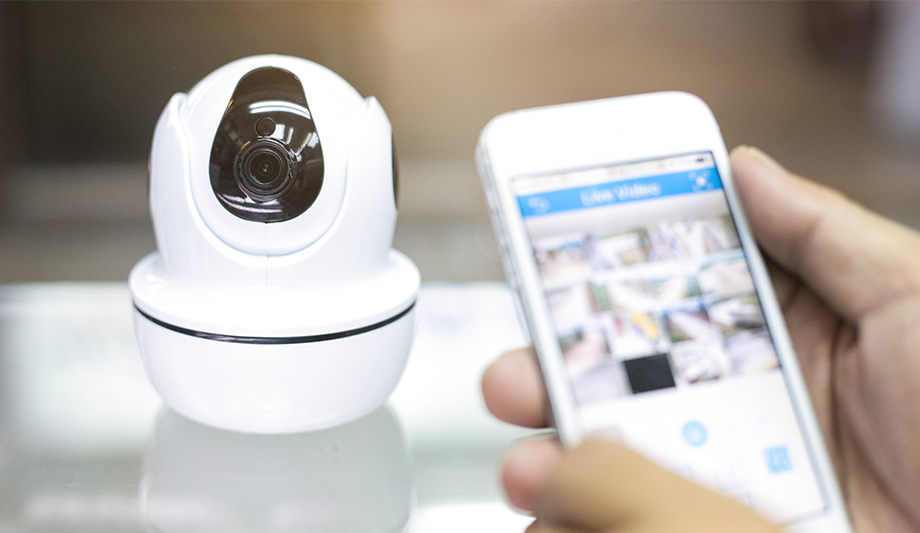Check out our special report on casino security
How can smart camera features address concerns about privacy?
Editor Introduction
Ensuring privacy is often a concern for video surveillance systems, especially in situations where a system intended for “public” surveillance could somehow, perhaps inadvertently, view private areas or situations. The classic example is an apartment building whose windows are within the range of a video surveillance camera. How can you provide video surveillance without invading the privacy of the apartment dwellers? Integrators and end users often turn to technology for a solution. We asked this week’s Expert Panel Round Table: How can smart camera features (such as privacy masking and programmable pan-tilt-zoom) address concerns about privacy?
There are several approaches to preserving privacy in designated regions, while providing the necessary degree of detail in regions of interest. Privacy Masks, or Window Blanking regions, allow an authorised user to define areas in the field of view where video will not be captured or obscured, or captured in low enough detail to preserve privacy of individuals. With PTZ cameras, this can also be done dynamically; you can blank or obscure a region only when you are zoomed in close enough to identify individuals, not otherwise. Also in PTZ cameras, you can lock out manual PTZ use and only permit programmed tours that avoid zooming in to areas where individual privacy needs to be assured. In the longer term as facial recognition and detection becomes more prevalent, it will be possible to selectively blank or obscure just faces for another degree of flexibility.
According to a recent Time/CNN survey, the overall support from the general public regarding surveillance has increased in the last decade. Security is important in order to, first, ensure that unauthorised personnel can’t view video; and, secondly, to safeguard that authorised personnel can’t/don’t monitor areas that require privacy. For example, Wrigley Field in Chicago is surrounded by homes. The Field needs to make sure that the homes are not in view of the surveillance system. Many features in today’s systems can effectively manage privacy masking and cybersecurity. Additionally, these systems leave an audit trail that shows how the system has been used, which is good to have should any questions arise.
Smart cameras can address privacy concerns in a number of interesting ways. A basic way that works for some applications is to only have the cameras stream video when there is an event or only at certain times – the trigger for the event can be external to the video (for example, an emergency alarm), or based on a video analytic. Another interesting approach to streaming only time- or event-based video is the use of physical covers for cameras that only retract under certain conditions. Also, privacy masking can avoid windows of private homes being seen on cameras used for public surveillance. Another approach to privacy is running face-finding software and obscuring people’s faces. Software in the camera can also completely mask people in the video, so that you only see ghost-like images of people and their movements, no faces or other identifiable characteristics like the color of their clothes.
Cameras using built-in Video Content Analysis could, firstly, “mask the whole image” by deleting it; e.g., if motion is below a threshold. Blocking lines-of-sight was commonplace on analogue PTZ cameras for years because public CCTV often unavoidably viewed private property, too. Mechanical end-stops and metal masks were fitted, then replaced by built-in reprogrammable electronics. Cameras need their orientation accurately at all times. Some occasionally lose this, giving misplaced masks. If added in- camera, masking remains forever. Sophisticated CCTV might add masks only at recorders, permitting removal if a subsequent investigation requires it. Also, to permit long-range detail gathering, but limiting details on nearer targets, zoom lens magnification could be restricted depending upon the direction of view. With VCA recognising human figures, faces and vehicle plates, masking need only apply to these small moving regions. All of these techniques permit “privacy by design” to be built in to our video surveillance.
In deployments where movable cameras are installed, it is very likely that a camera can be maneuvered to view areas that are not the subject of the surveillance system, which could compromise privacy. This could possibly even include residential areas. It is, therefore, essential that cameras are equipped with sufficient privacy masking to inhibit the possibility of viewing areas outside the main subject for the surveillance system.
Smart camera features, such as privacy masking and programmable PTZ, can help to address some privacy concerns, but it’s still up to the integrator and the user to implement those features. Unless these features are policed, they are not necessarily going to change concerns over privacy issues. One step in the right direction is that the United Kingdom mandates the use of signage to alert the general public that a video surveillance system is in place.
Editor Summary
Camera intelligence is a useful way to ensure that video is captured when, where and how it is needed. As this week’s Round Table panelists explain, intelligence can also help determine what images a camera system does not capture. When looking to ensure privacy, not capturing video can be essential. Technology has plenty to offer here, and can help integrators and end users promote use of video surveillance in a broader range of applications with fewer concerns of invading someone’s privacy.
- Related companies
- Axis Communications
- Lambert & Associates
- Pelco, Inc
- ONVIF
- Oncam
- Siklu Communication Ltd
- Related categories
- CCTV software
- CCTV cameras
- CCTV pan tilts
- View all news from
- Axis Communications
- Lambert & Associates
- Pelco, Inc
- ONVIF
- Oncam
- Siklu Communication Ltd
Expert commentary
Security beat
One system, one card
DownloadEnhancing physical access control using a self-service model
DownloadAligning physical and cyber defence for total protection
DownloadUnderstanding AI-powered video analytics
DownloadHow to implement a physical security strategy with privacy in mind
DownloadHikvision AOV 4G Solar Camera Series for Off-Grid Video Security
KentixONE – IoT Access and Monitoring For Data Centres
Climax Technology HSGW-Gen3 Modular Smart Security Gateway























